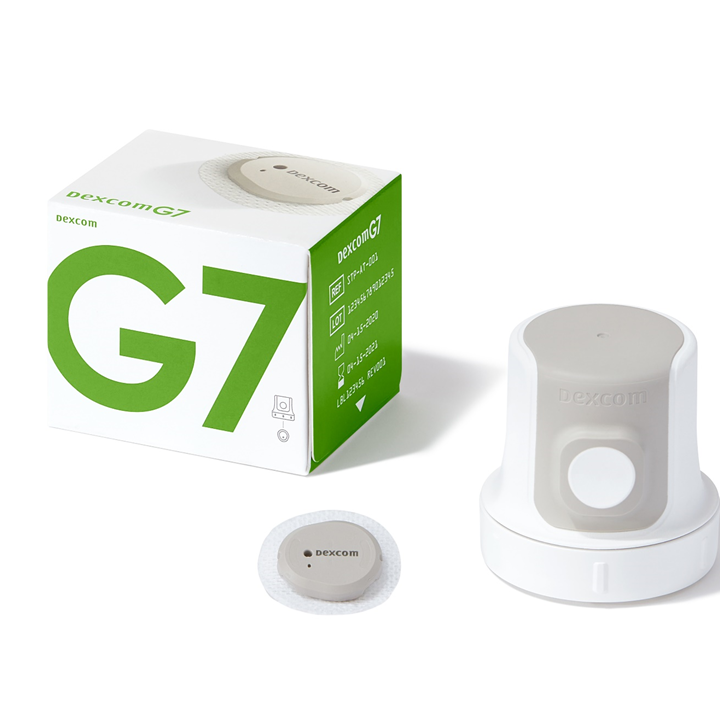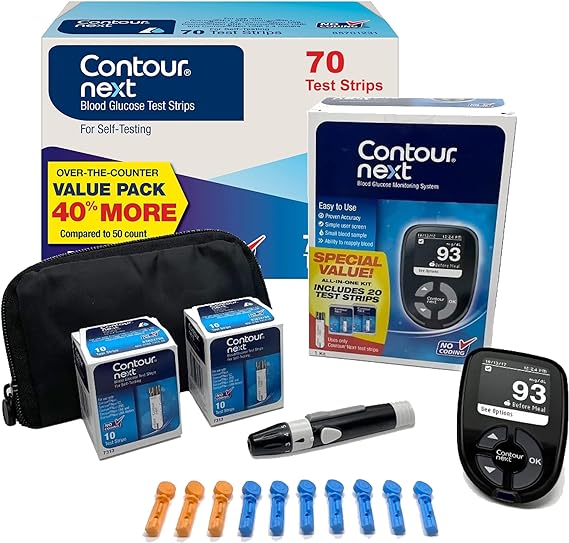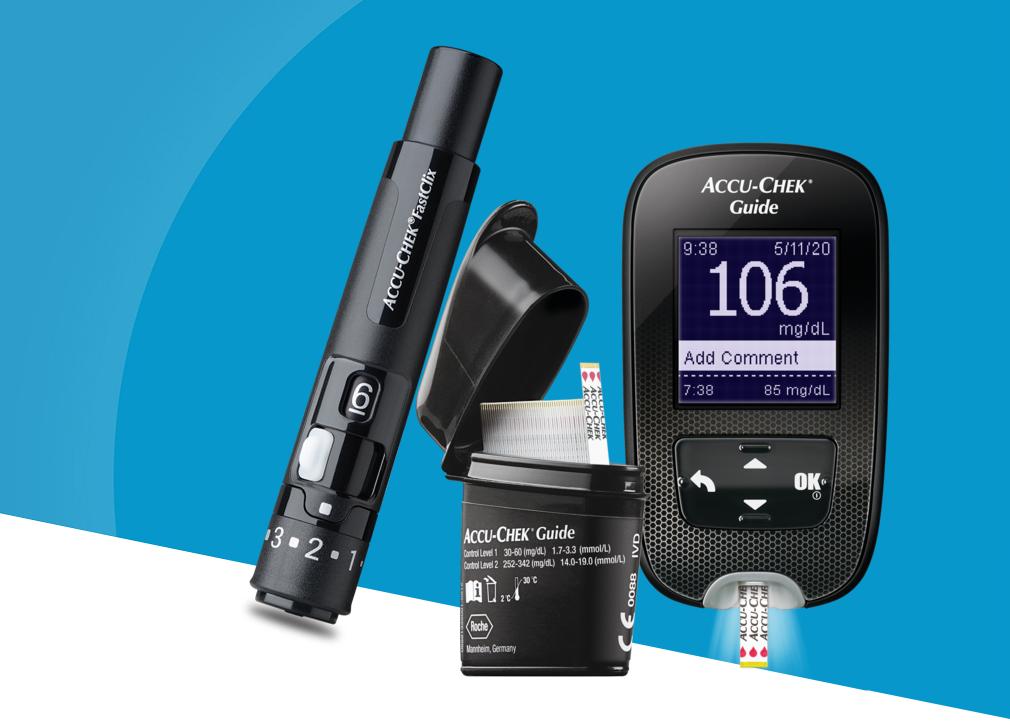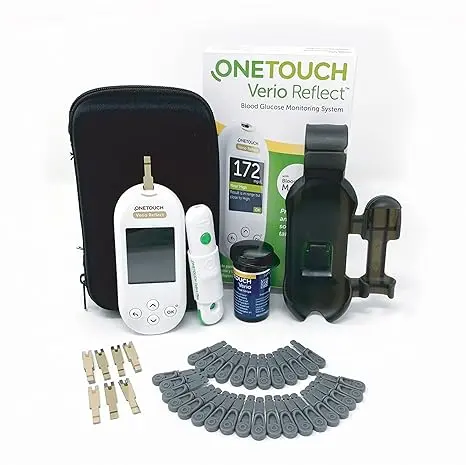Best Blood Glucose Monitoring Systems to 2024: A Comprehensive Review
Monitoring blood glucose levels is crucial for individuals living with diabetes.
To help you make informed choices about the right blood glucose monitoring system for your needs, we've conducted a comprehensive evaluation of some of the best systems available on the market.
Below, we present our findings and a summary table to assist you in making the most suitable choice.
Table of Contents
1. Summary Table: Best Blood Glucose Monitoring Systems 2024
- Systems featured: Freestyle Libre 3, Dexcom G7, Accu-Chek Guide Me, OneTouch Verio, Contour Next
2.Types of Blood Glucose Monitoring Systems
- Systems discussed: Traditional Blood Glucometers, Continuous Glucose Monitors (CGMs), Flash Glucose Monitoring, Smartphone Apps
3. How to Choose the Best Blood Glucose Monitoring System
- Factors discussed: Accuracy, Ease of Use, Size, Coding, Cost, Integration, and Data Management
4. Latest Continuous Glucose Monitors (CGMs) or Traditional Blood Glucometers, What to chose?
5. Blood Glucose Monitoring Systems for 2024: An In-Depth Review and Price Table
- A summarized price range for the evaluated blood glucose monitoring systems
6. Conclusion
- Importance of choosing the right Blood Glucose Monitoring System
- Making an informed decision to support your health and well-being
7. Frequently Asked Questions (FAQs)
- Addressing common queries regarding Blood Glucose Monitoring Systems and their use
1. Summary Table: Best Blood Glucose Monitoring Systems 2024
| Monitoring System | Accuracy | Ease of Use | Data Management | Notable Feature | Access Link |
|---|---|---|---|---|---|
| Freestyle Libre  Shop Now Shop Now | Excellent | Disposable sensor No fingersticks | Smartphone app | Continuous monitoring
(CGMs) | Shop  |
| Dexcom G7  Shop Now Shop Now | Exceptional | Disposable sensor No fingersticks | Smartphone app | Continuous monitoring (CGMs) Real-time data with high/low alerts |
Shop  |
| Excellent | User-friendly | Bluetooth connectivity | Bright strip port with SmartPack | |
| OneTouch Verio  Shop Now Shop Now | High | Color indicator Fingersticks | Shareable data | Smart and compact design | Shop |
| Contour Next  Shop Now | High | Compact design Fingersticks | Bluetooth connectivity | Second-Chance® sampling for accuracy | Shop  |
Please note that the provided links will direct you to more detailed product information, reviews, and purchasing options.
2. Types of Blood Glucose Monitoring Devices
Blood Glucose Monitoring Systems, often abbreviated as BGMS, come in various forms, each with its unique features and advantages. Here's an overview of some of the main types of BGMS:
Traditional Blood Glucometers
These are handheld devices that require a small blood sample obtained through a fingerstick. They provide a quick measurement of blood glucose levels. While they offer accuracy, the need for fingerstick testing can be painful and inconvenient. Examples of traditional glucometers include the Accu-Chek Guide and OneTouch Verio.
Continuous Glucose Monitors (CGMs):
These systems consist of a sensor placed under the skin that continuously measures glucose levels in the interstitial fluid. Data is sent to a receiver or smartphone, providing real-time monitoring without the need for frequent fingerstick tests. Popular CGMs include the Dexcom G6 and the Freestyle Libre.
Flash Glucose Monitoring:
A variation of CGMs, flash glucose monitors like the FreeStyle Libre 2 require scanning a sensor to obtain glucose readings. They don't provide real-time data but offer a historical view. These systems eliminate the need for regular fingerstick testing for glucose levels.
Smartphone Apps:
Some apps can transform your smartphone into a glucose monitoring device, but they usually require additional sensors or devices for measurement. They offer convenience but may still involve fingerstick testing depending on the system used.
3. How to Chose the Best Blood Glucose Monitoring System?
Choosing the right blood sugar monitoring system or divice is essential because it directly impacts your ability to manage your diabetes effectively. Factors such as accuracy, ease of use, data management, and compatibility with your lifestyle play a significant role in your decision-making process.
When selecting a Blood Glucose Monitoring System, consider the following factors:
- Accuracy: Ensure the system provides accurate glucose measurements, as this is crucial for effective diabetes management.
- Ease of Use: Assess how comfortable you are with the monitoring method. Some people prefer fingerstick testing, while others opt for CGMs or flash glucose monitors to avoid frequent fingersticks.
- Size of meter/Screen size: Do you need one that’s small and easy to carry on the go? Or do you prefer a larger version that’s easier to hold? Does it have a large, easy-to-read, backlit display?.
- Coding: Make sure that the one you choose is clearly marked as a “No Code” device. Otherwise, you may need to manually calibrate the device whenever you start a new box of test strips.
- Cost/Insurance coverage: Evaluate the overall expenses, including the device, test strips, sensors, and other supplies. Don't forget to consider insurance coverage.
- Integration and data management: Determine whether the system aligns with your daily routine and lifestyle. For example, CGMs and flash glucose monitors might be more suitable for those who prefer continuous monitoring and wish to reduce the need for fingerstick tests.
4. Latest Continuous Glucose Monitors (CGMs) or Traditional Blood Glucometers, What to chose?
When considering whether to choose a Continuous Glucose Monitor (CGM) or a traditional blood glucose monitor, it's essential to weigh the advantages and disadvantages of each option.
Continuous Glucose Monitors (CGMs):
- Real-Time Data: CGMs offer a continuous stream of real-time blood glucose data, helping individuals gain a comprehensive understanding of their blood sugar trends and patterns throughout the day.
- High/Low Alerts: CGMs provide customizable alerts for high and low blood glucose levels, allowing proactive management and minimizing the risk of severe hypoglycemia or hyperglycemia.
- Frequent Monitoring: With CGMs, there's no need for frequent fingerstick tests, reducing the discomfort and inconvenience of traditional monitoring methods.
- A1C Improvement: Studies have shown that using CGMs can lead to improved HbA1c levels over time, indicating better overall blood sugar control.
- Dietary Insights: CGMs can help individuals better understand the impact of different foods on their blood sugar, making it easier to identify which dietary choices lead to spikes or drops in glucose levels.
Traditional Blood Glucose Monitors:
- Compact and Portable: Traditional monitors are small, easy to carry, and suitable for on-the-go use, making them a convenient choice.
- Cost-Effective: Traditional monitors are typically more affordable than CGMs, which can be a crucial factor for individuals who wish to manage their diabetes on a budget.
- Accuracy: These monitors offer quick and reliable blood glucose measurements, enabling users to obtain results within seconds.
Choosing between a CGMs and a traditional monitor depends on your lifestyle, comfort level, and budget.
CGMs are ideal for those who want a detailed understanding of their blood sugar trends and prefer to avoid frequent fingersticks, which can ultimately lead to better blood sugar control and a potential decrease in HbA1c levels. They also serve as valuable tools for evaluating the impact of different foods on blood sugar levels, helping individuals make informed dietary choices.
On the other hand, traditional monitors are a more budget-friendly and straightforward option, providing quick and reliable results suitable for those comfortable with periodic fingerstick testing. Consulting with your healthcare provider is essential for personalized advice on selecting the most appropriate monitoring method to effectively manage your diabetes.
5. Blood Glucose Monitoring Systems for 2024: An In-Depth Review and Price Table
1. Freestyle Libre 3: Continuous Glucose Monitors

- Accuracy: High accuracy in real-time glucose monitoring.
- Ease of Use: Comfortable sensor and easy-to-read data, with a disposable 14 days sensor.
- No fingersticks
- Data Management: Bluetooth connectivity to a smartphone app.
- Notable Feature: Continuous glucose monitoring with customizable alarms.
- Link: Freestyle Libre 3
2. Dexcom G7: Continuous Glucose Monitors

- Accuracy: Exceptional accuracy in continuous glucose monitoring.
- Ease of Use: Easy application with a disposable 30 days sensor.
-
No fingersticks.
- Data Management: Real-time data on a smartphone app.
- Notable Feature: Alerts for high and low glucose levels.
- Link: Dexcom G7
3. Accu-Chek Guide: Traditional Blood Glucometers

- Accuracy: Excellent
- Ease of Use: User-friendly
- Fingersticks.
- Data Management: Bluetooth connectivity
- Notable Feature: Bright strip port with a spill-resistant SmartPack.
- Link: Accu-Chek Guide Me
4. OneTouch Verio Reflect: Traditional Blood Glucometers

- Accuracy: Reliable and accurate results.
- Ease of Use: Simple to operate with color range indicator.
- Fingersticks.
- Data Management: Easily shareable data with healthcare providers.
- Notable Feature: Smart and compact design.
- Link: OneTouch Verio
5. Contour Next One: Traditional Blood Glucometers

- Accuracy: High level of accuracy.
- Ease of Use: Compact and user-friendly design.
- Fingersticks.
- Data Management: Bluetooth connectivity to the Contour Diabetes app.
- Notable Feature: Second-Chance® sampling for more accurate results.
- Link: Contour Next One
Price Table
Here's a summary of the price ranges for the evaluated blood glucose monitoring systems:
| Blood Glucose Monitoring System | Price Range |
|---|---|
| FreeStyle Libre 3 | Higher-Range sensor FreeStyle Libre Sensor x 2 + Libre Reader From: $364.78 |
| Dexcom G7 | Higher-Range sensor
Dexcom 7 Continuous Glucose Monitoring System (CGM) $480.00 – $590.00 |
Accu-Chek Guide Me | Mid-Range $70-159 |
OneTouch Verio | Mid-Range $70-100 |
| Contour Next One | Mid-Range $50-80 |
Note: The price range may vary based on different factors, including the choice of starter kits, bundles, and retailers. Furthermore, insurance providers may offer coverage or reimbursement for some of these systems. Please consult your insurance provider to explore potential benefits.
6. Conclusion
In conclusion, effective management of blood sugar levels is paramount for individuals living with diabetes.
With the wide array of blood glucose monitoring systems available in 2024, you have more choices than ever to find the one that best aligns with your unique needs and lifestyle.
From continuous glucose monitors to traditional glucometers and the latest CGMs, these systems offer a variety of features to help you take control of your diabetes management. The advancements in accuracy, ease of use, and data management make these systems essential tools for your overall health and well-being.
Remember to consider factors such as accuracy, ease of use, cost, and integration with your daily life when selecting the right system for you. Additionally, explore insurance coverage options that may help alleviate some of the costs associated with these monitoring systems.
Your health and well-being are the top priorities, and these blood glucose monitoring systems are here to assist you in maintaining healthy blood sugar levels. We hope this comprehensive review has provided valuable insights to help you make an informed decision in managing your diabetes effectively.
For more detailed information on each of these systems and to make a choice that best suits your requirements, you can explore the provided links for reviews and purchasing options. Stay proactive, stay healthy, and manage your diabetes with confidence.
Please consult with your healthcare provider or a certified diabetes educator to ensure that the selected blood glucose monitoring system is the most appropriate for your specific medical needs.
7. Frequently Asked Questions (FAQs) – Blood Glucose Monitoring Systems
1. What is a Blood Glucose Monitoring System, and why is it important for individuals with diabetes?
A Blood Glucose Monitoring System (BGMS) is a device or set of devices that measures and tracks an individual's blood glucose levels. It's crucial for people with diabetes because it allows them to monitor their blood sugar and make informed decisions about their daily management, such as adjusting medications, dietary choices, and physical activity.
2. What are the main types of Blood Glucose Monitoring Systems (BGMS) available on the market?
The main types of BGMS include Traditional Blood Glucometers (which require fingerstick blood samples), Continuous Glucose Monitors (CGMs, which provide real-time data), Flash Glucose Monitors (relying on sensor scans), and Smartphone Apps that transform mobile devices into monitoring tools. Each type has unique features and advantages.
3. How often should I monitor my blood glucose levels?
The frequency of blood glucose monitoring depends on individual factors and treatment plans. People with type 1 diabetes and some with type 2 may need to test several times a day. Your healthcare provider will guide you on an appropriate testing schedule tailored to your specific needs.
4. What factors should I consider when choosing a BGMS?
When selecting a BGMS, consider factors such as accuracy, ease of use, size of the meter or screen, coding requirements, cost, and integration with data management tools or apps. Your lifestyle, comfort with monitoring methods, and budget should also influence your choice.
5. What is the advantage of Continuous Glucose Monitors (CGMs) over traditional monitors?
CGMs provide continuous real-time blood glucose data without the need for frequent fingerstick tests. They offer alerts for high and low glucose levels, potentially improve A1C levels, and help users gain insights into the effects of different foods on their blood sugar.
6. Do insurance providers cover the cost of BGMS and related supplies?
Many insurance providers offer coverage or reimbursement for BGMS devices and supplies, depending on your specific plan. It's advisable to consult your insurance provider to explore potential benefits and understand the expenses associated with your chosen system.
7. Are there any emerging technologies or advancements in the field of BGMS?
The field of BGMS continues to advance, with ongoing improvements in accuracy, ease of use, and data integration. Emerging technologies include smaller, more user-friendly devices, faster testing times, and enhanced connectivity options for seamless data management.
8. Can BGMS devices help me manage my diabetes effectively?
Yes, BGMS devices play a vital role in effective diabetes management. By monitoring your blood glucose levels, you can make informed decisions about medication adjustments, dietary choices, and activity levels, which are essential for maintaining optimal blood sugar control and overall well-being.
9. Where can I find more detailed information about specific BGMS devices and their reviews?
The article you're reading offers information on various BGMS devices and provides links to more detailed product information, reviews, and purchasing options. You can explore these links to make an informed choice based on your specific requirements.
10. How can I learn more about my insurance coverage for BGMS devices?
To understand your insurance coverage for BGMS devices and related supplies, including potential reimbursement options, contact your insurance provider or review your insurance policy. They can provide you with detailed information on coverage and eligibility criteria.
